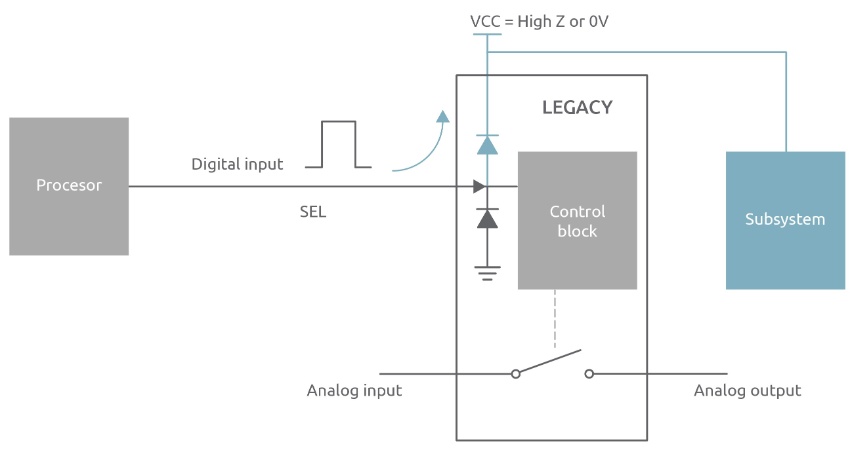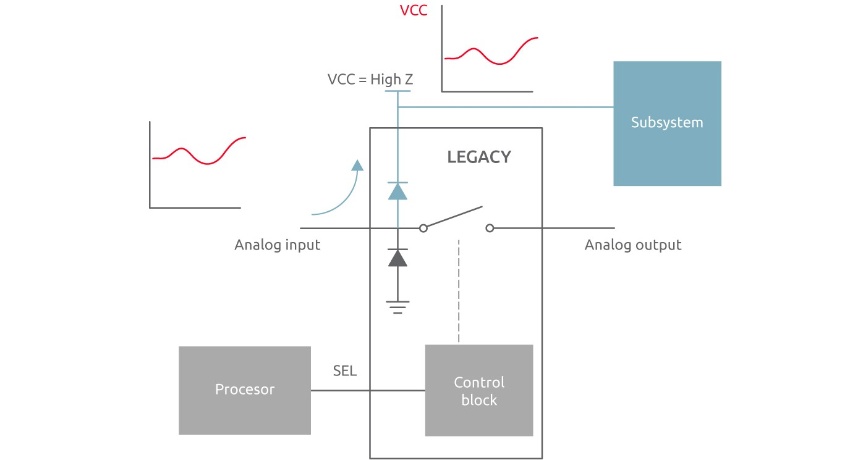In recent years the automotive and industrial sectors have experienced tremendous advancements due to the rapid evolution and integration of sensor technologies. Modern vehicles feature advanced driver assistance systems (ADAS) including camera, radar, and LiDAR. These advanced systems play a crucial role in functions such as collision avoidance, adaptive cruise control, parking assistance and autonomous driving. The heightened complexity of these systems demands sophisticated internal diagnostics and monitoring subsystems.
In parallel, the industrial landscape has also undergone a transformative shift due to the evolution of sensor technologies. Advanced IoT-connected technologies are changing the trajectory of Industry 4.0. The heightened complexity demands sophisticated internal diagnostic and monitoring sub-systems, which are essential to ensure the safety, robustness and efficient performance of these applications. They in turn require optimal analog switching and multiplexing.
Analog switches and multiplexers are commonly used in ADAS and IoT applications to simplify signal management and reduce system complexity, resulting in a lower component (cable) count and smaller PCB area. Analog multiplexers provide significant advantages in intricate designs that involve measuring multiple sensor inputs, signal nets, or voltage cores. This utilization allows users to adopt a design approach centered around modularity, reuse, and scalability.
More information is briefly highlighted in the table below:

NMUX delivering safe and efficient switching
In addition to the points listed above, newer analog multiplexers should incorporate protection features to ensure reliable and robust performance. That’s exactly what Nexperia’s latest NMUX devices offer. The NMUX1308 and NMUX1309 are versatile CMOS bi-directional analog switches, respectively featuring eight channels (8:1) and dual channels (4:1), and provide a plethora of protection features to safeguard the device and connected components from potential issues. Both devices have been qualified to the Automotive Electronics Council (AEC) standard Q100 (Grade 1).
Designed for general-purpose use, they operate within a voltage range of 1.5 V to 5.5 V. Featuring 5.5 V overvoltage-tolerant digital inputs, they are compatible with 1.8 V CMOS levels, eliminating the need for voltage translation.
Current Injection Protection
Each analog signal pin on the NMUX130x devices incorporates injection current control circuitry. This innovative circuitry serves to isolate overvoltage spikes on unselected analog signal pins, preventing them from affecting the selected analog signal path.
This feature helps preserve measurement accuracy. In other analog multiplexers, internal ESD clamping diodes create a scenario where the overvoltage event conducts to VCC, internally activating the PMOS FET of the transmission gate. This, in turn, affects the output voltage and has the potential to impact the input node, especially if the analog input source impedance is large. Furthermore, the NMUX130x control circuitry eliminates the need for external overvoltage clamp components, such as large series resistors or supply clamping Schottky diodes, which would be required to prevent the above scenario.

Fail-Safe Logic and Power-Off-Protection
Fail-Safe Logic (FSL) in the NMUX130x prevents back-powering of the digital I/Os to VCC. This allows devices with independent core voltages, such as microcontrollers, to be initialized first with active digital inputs while the NMUX130X supply (VCC) is in a high-impedance or unpowered state. In some legacy and competitor multiplexers, an event like the one described above could back-power VCC through the internal ESD clamping diode that connects the Analog input to VCC, potentially leading to system issues.

Another significant protective feature, Power-off-Protection (PoP), allows the biasing of analog I/Os when Vcc is at GND or high-Z. In legacy devices, this scenario might back-power the analog switch and generate voltage to the VCC supply, potentially resulting in partially powered subsystems. However, the NMUX130X includes internal circuitry that isolates the connection between the analog inputs and VCC while keeping the analog switch output in a high-impedance state.
This is critical in systems where active circuitry driving analog inputs might have independent supply voltages and are brought up before VCC. In legacy and competitor devices, initializing active circuitry before the analog multiplexer can cause the analog inputs to draw excessive current, particularly in devices with multiple channels, raising the risk of system issues.

All the features and performance of the NMUX1308 and NMUX1309 can be further explored using the NMUX1308/NMUX1309 evaluation board, which will also facilitate accelerated development.